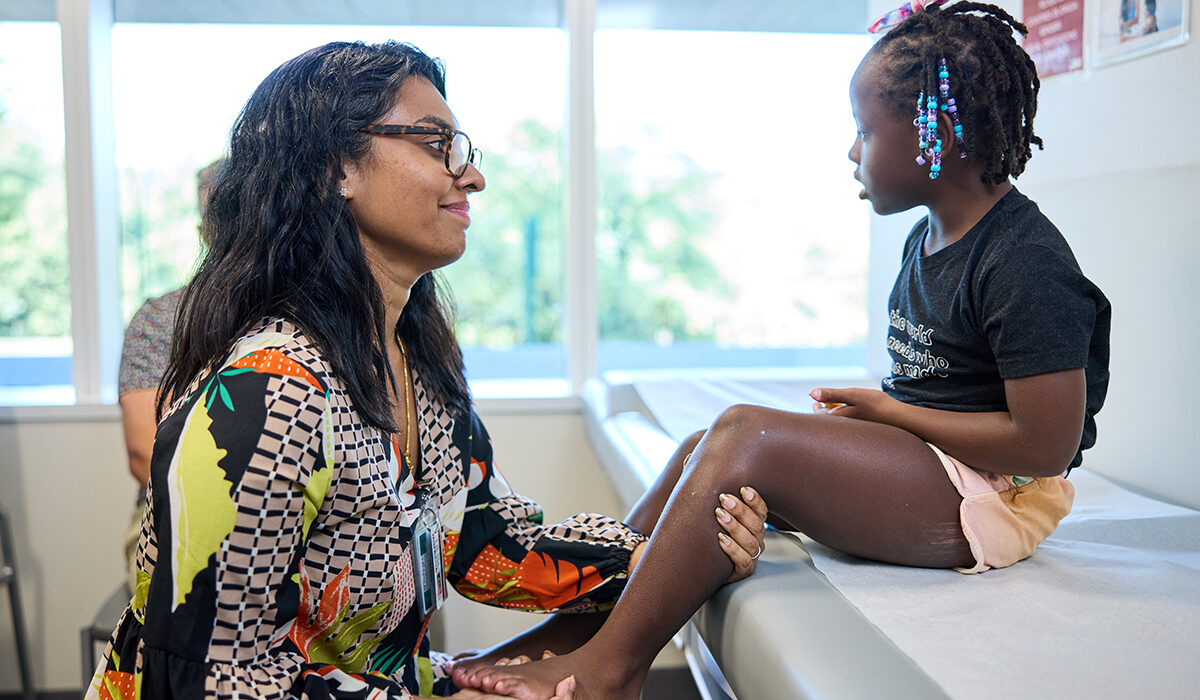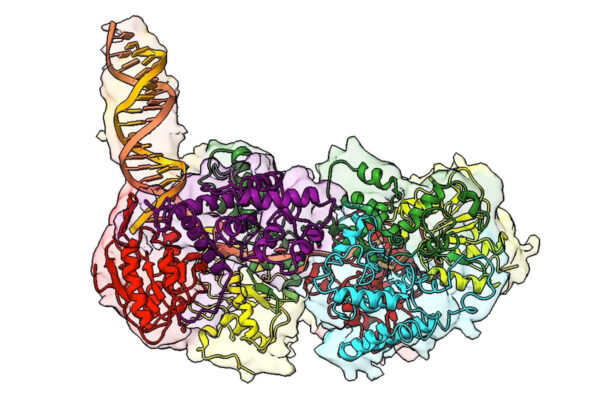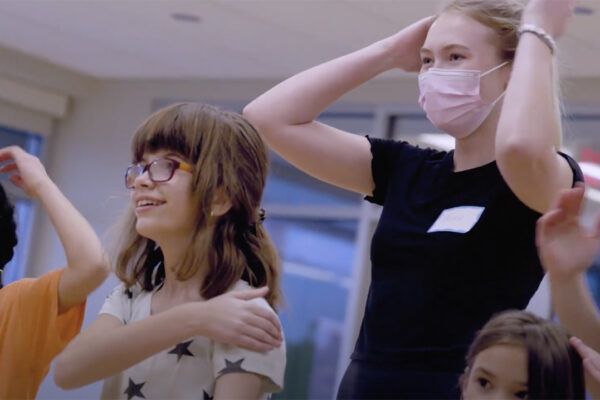Cerebral palsy affects around one in 345 children in the U.S., and more than half of them experience a problem called dystonia — involuntary and often painful muscle contractions, most commonly in the legs, that lead to abnormal movement and postures and make regular activities such as walking difficult. Traditionally, doctors have relied on subjective assessment for diagnosing dystonia, which can be inconsistent and lead to delayed treatment. For children with cerebral palsy, this delay can result in their condition worsening and becoming more difficult to treat.
Now, an interdisciplinary research team led by Bhooma Aravamuthan, MD, DPhil, an assistant professor of neurology at Washington University School of Medicine in St. Louis, has identified an objective way of measuring leg dystonia in children with cerebral palsy. Their method evaluates leg movement variability — specifically, the extent to which a child’s legs adduct, or move toward the center of the body, while they’re sitting down. With this straightforward method, doctors can quickly and accurately determine the severity of dystonia in their patients and tailor treatments to their needs.
In an effort to better understand the causes of dystonia, the researchers then identified in mice the conditions and brain region linked with leg movement variability, suggesting that early medical intervention targeting the relevant brain processes could effectively treat or even prevent this common complication.
The results were published online July 3 in Annals of Neurology.
“An overarching goal of this work is about standardizing dystonia assessment by quantifying diagnoses that were previously based on doctors’ gut feelings,” said Aravamuthan, who started the project while being mentored in the lab of co-senior author Jordan McCall, PhD, an associate professor of anesthesiology at WashU Medicine. “These results can be immediately put into clinical practice to help guide treatment selection for children with cerebral palsy and ultimately improve patient outcomes.”
Leveraging technology to measure movement
Despite being a common feature of cerebral palsy, dystonia has proven difficult to pin down in earlier research because of its variability of symptoms, which may be subtle and only appear during specific activities or when a child is stressed. Inspired by her work with pediatric neurology patients, Aravamuthan and her collaborators set out to both quantify the clinical presentation of leg dystonia and determine its causal mechanism in the brain, with the goal of making standardized evaluation and treatment available for patients immediately.
Aravamuthan’s study had two main parts. First, a panel of eight pediatric movement disorder specialists practicing at different institutions across the U.S. watched videos of 193 children ages 3 and up with cerebral palsy performing a seated task with their hands. They found that the variability in the child’s leg movements correlated strongly with the severity of their dystonia as assessed from the videos, suggesting that this variability — which is objectively and quantitatively measurable in an office setting in terms of the angle and position of the child’s legs as they move toward the midline of the body — could be used as a reliable marker of the disorder.
“We were able to establish concrete guidelines that physicians can use today to evaluate dystonia in patients with cerebral palsy more accurately,” Aravamuthan said. “That will make treatment better for our patients as well as support drug development and future research that can rely on this consistent and reproducible assessment method.”
In the second part of the study, Aravamuthan’s team tested whether stimulating specialized brain cells in the region associated with motor control could cause similar leg movement variability in mice as that observed in people. These cells, called striatal cholinergic interneurons (ChIs), play a key role in coordinating muscle movements and ensuring smooth and purposeful actions, making them a promising target for developing treatments for dystonia.
Researchers in Aravamuthan’s lab selectively excited these neurons in mice over 14 days. They observed that mice with chronic ChI excitation displayed increased leg movement variability compared to mice without ChI excitation, mimicking the dystonia seen in people with cerebral palsy. This did not happen with short-term excitation, showing that sustained activity in these neurons is necessary to produce the dystonia. This suggests that drugs that target overactive striatal ChIs could be a promising approach for treating dystonia.
“We know from the clinic that it takes weeks, months or sometimes even years after brain injury for someone to develop dystonia,” Aravamuthan said. “There are medications already in use that focus on reducing excitability of these neurons, but they’re given after dystonia has already been present for a while, which may be why they’re only variably effective. Our work in mice suggests that if you give these medications early and prevent chronic excitation of these neurons, you may prevent dystonia from happening.”
Aravamuthan added that additional experiments and drug trials would be required before such interventions see clinical use.
Gemperli K, Lu X, Chintalapati K, Rust A, Bajpai R, Suh N, Blackburn J, Gelineau-Morel R, Kruer MC, Mingbunjerdsuk D, O’Malley J, Tochen L, Waugh JL, Wu S, Feyma T, Perlmutter J, Mennerick S, McCall JG, Aravamuthan BR. Chronic striatal cholinergic interneuron excitation causes cerebral palsy-related dystonic behavior in mice. Annals of Neurology. Online July 3, 2025. DOI: https://onlinelibrary.wiley.com/doi/10.1002/ana.27299
This work was funded by the National Institute of Neurological Disorders and Stroke (K08NS117850, R01NS117899, R01NS106298), the Pediatric Epilepsy Research Foundation, the Rita Allen Foundation and the National Institute of Mental Health (R01MH123748). The content is solely the responsibility of the authors and does not necessarily represent the official views of the NIH.
About Washington University School of Medicine
WashU Medicine is a global leader in academic medicine, including biomedical research, patient care and educational programs with 2,900 faculty. Its National Institutes of Health (NIH) research funding portfolio is the second largest among U.S. medical schools and has grown 83% since 2016. Together with institutional investment, WashU Medicine commits well over $1 billion annually to basic and clinical research innovation and training. Its faculty practice is consistently within the top five in the country, with more than 1,900 faculty physicians practicing at 130 locations. WashU Medicine physicians exclusively staff Barnes-Jewish and St. Louis Children’s hospitals — the academic hospitals of BJC HealthCare — and treat patients at BJC’s community hospitals in our region. WashU Medicine has a storied history in MD/PhD training, recently dedicated $100 million to scholarships and curriculum renewal for its medical students, and is home to top-notch training programs in every medical subspecialty as well as physical therapy, occupational therapy, and audiology and communications sciences.
Originally published on the WashU Medicine website



